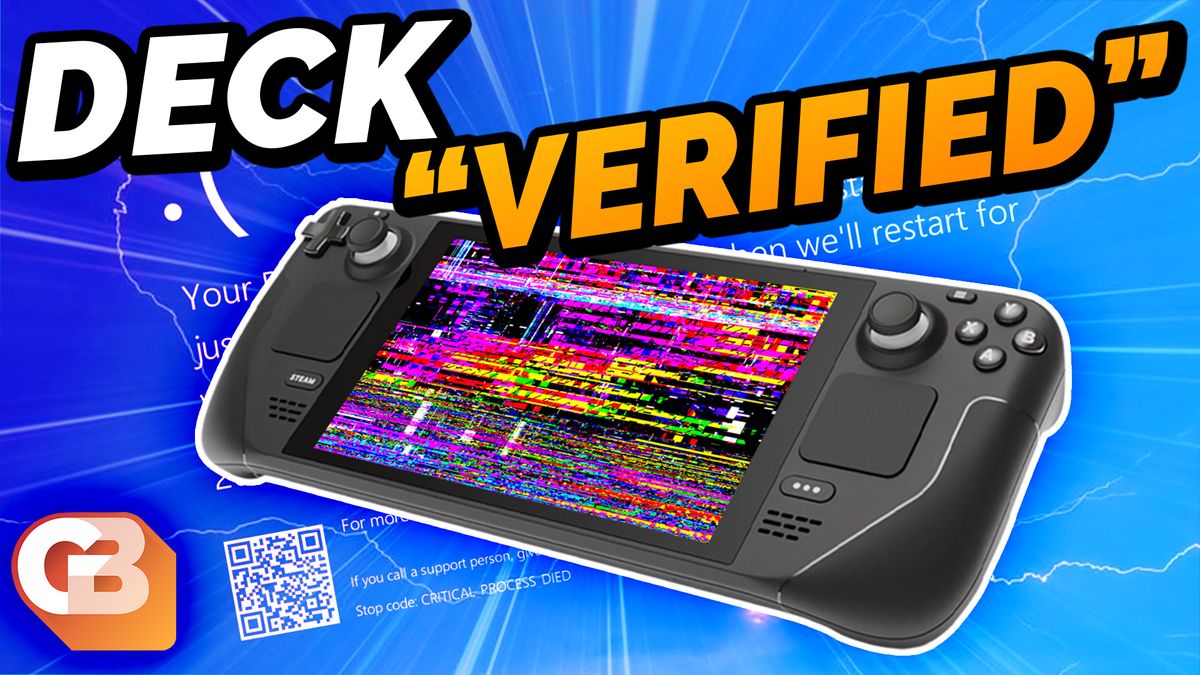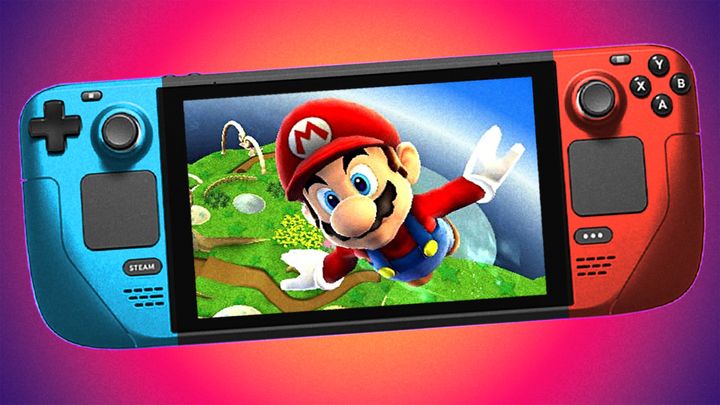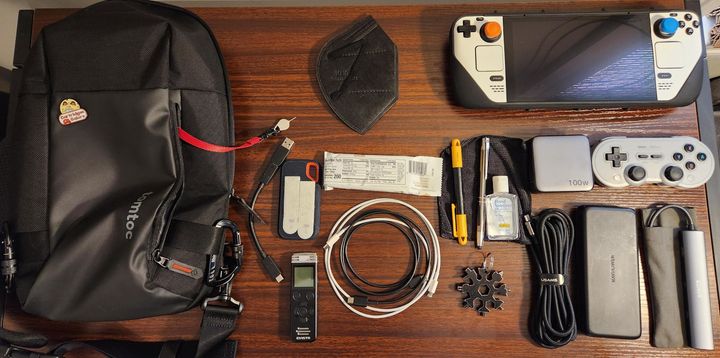Steam Deck Verified: The Future of PC Gaming or a Sisyphean Task?
With titles like The Last Of Us and The Division 2 it's had me wondering: are we dealing with a compatibility crisis on Steam Deck?

The Steam Deck. It was my favorite device of 2022. Partially because it’s built on Linux, but mostly because it console-izes the PC gaming experience. While some PC gamers think that “console” is a dirty word, it’s not.
It used to be that PC gaming was a chore requiring end users to have a working knowledge of Windows, familiarity with system specifications, and deep pockets to shell out for the latest hardware.
But today, with the Steam Deck, you can get an impressively powerful handheld PC gaming experience that has–in many ways–simplified the process of playing PC games. All at a modest price point.
However the Steam Deck is based on Linux. And in case you hadn’t noticed, Linux isn’t Windows. You know Windows, right? It’s the operating system that has somehow been the de-facto desktop PC operating system for decades.
And this switch from the closed source, proprietary, and poorly managed Windows ecosystem to a free and open source OS means that there are naturally going to be software incompatibilities.
To mitigate the uncertainty of which games will and which won’t work, Valve’s Deck Verified program has been a lifeline for many.
Largely, this program works as intended. But every once in a while, there are “Verified” games that cease working as intended… or perhaps the game stops delivering the performance that “Verified” would insinuate.
And truthfully, the undertaking Valve has endeavored upon with the Steam Deck is a Sisyphean task. Games update, things break, and old solutions become incompatible.
Valve can’t control when a game gets an update. And most of the time, they’re not afforded time to test the game before the update (or even a new game) goes live.
So what’s a Valve to do?
First, let’s define the problems Valve faces.
Games With Anti-Cheat
If you’re an avid multiplayer gamer, you probably are keenly aware of cheaters. Games where your adversaries cheat just aren’t fun. So developers have taken to technical measures to tackle the problem.
Anti-cheat software monitors a players’ PC and tries to detect users who are behaving in abnormal ways or running software attempting to modify the game.
And many of these solutions work incredibly well. There’s EasyAntiCheat, Battleye, and other ready-made applications that can thwart the cheaters. But, often, they either don’t support–or support hasn’t been enabled for–Linux players.
So what can Valve do about this? Well, they’ve been working on solutions. They’ve partnered with the biggest vendors in the space to deliver Linux support. And most anti-cheat solutions now support Linux. But it’s up to developers to enable said support for their games.
So Valve needs to win over developers to enable anti-cheat in their biggest and most played games. This will be a slow process that will involve proving Steam Deck as a viable, popular platform. They’re well on their way to doing that with over one million units sold since launch. But there’s a long road ahead of Valve.
Perhaps they should release more detailed numbers for the number of Decks sold worldwide. I suspect it’s approaching 3 million at this point, but that’s just my intuition.
What else do you think Valve can do to encourage more developers to bring anti-cheat support to Steam Deck? Leave me a comment and let me know! I’d love to hear your thoughts on this subject.
Games That Update
Stop me if you’ve heard this one before: what happens when a Verified or Playable title has an update that breaks compatibility with the Steam Deck? That’s the next issue Valve faces. This is a big one, and a tough one. And this has happened many times. One might even call it a crisis.
Tom Clancy’s The Division 2 is one such example. Just a few days ago, users started reporting the latest update has caused the game to crash the whole Steam Deck, not just the game.
And let’s not forget last November when EA arbitrarily decided to roll out the EA App which broke compatibility with Steam Deck for pretty much every game they updated.
So what can Valve do to mitigate this issue? First, they need to convince more developers to treat Steam Deck like a distinct platform. Developers need to be testing their updates against Steam Deck before pushing them live to customers.
How do they do this? Perhaps sending Steam Decks to studios. Perhaps by being more transparent with the number of units sold.
Second, they need to expand the Steam Deck player base, similar to what I said about fixing the anti-cheat problem. It will be interesting to see the Steam Hardware Survey this month to see how much the sale moved the needle with Steam Deck adoption.
Third, and this one is critical, Valve needs to release a first party game that takes advantage of the Steam Deck’s hardware. Something that plays best on Steam Deck using the touchpads, touchscreen, haptic feedback, gyro aim, and rear buttons… and perhaps make it a pack-in for new Steam Deck purchases for a limited time.
What else could Valve do to move the needle? Sound off in the comments below!
Games With Bad Ratings
But maybe it’s not just updates. What happens when a game was given the wrong rating? When a title that should be marked “Playable” was given “Verified” instead? Well, then, everything loses its meaning. The world goes to hell.
There are many instances of this. In fact, it seems like several prominent examples are actually PlayStation games. Horizon: Zero Dawn was famous for its poor performance (it remains unclear if they’ve resolved this issue or not) and God of War has been notorious for crashing–not just the game, but the Deck itself, necessitating a hard reboot.
There have been other non-PlayStation games like The Witcher 3: Wild Hunt.
Now, Valve has implemented some procedural changes. And they’ve slowed down the pace of testing to try and deliver more accurate ratings for games.
Games That Just Launch Bad
I’ve gotta say, Valve kinda stepped in this one all on their own. They have included a short (very short) clip from The Last of Us Part I in a video on steamdeck.com. The video shows games, many of which are Steam Deck Verified, being played on a Steam Deck. Or at least that’s the implication seeing as the video is framed by the image of a Steam Deck.
So when you see The Last of Us among these titles–at the time this video was released, TLOS was yet to make its PC debut–you would think that means the title would be Verified day one.
Instead, it has an unknown status and critical reception to the PC port has been poor to say the least.
I bought the game and–even after yesterday’s hotfix–it’s still in pretty rough shape. The game crashed the Deck in the opening cutscene. Twice.
Look, there are many issues that need to be addressed with TLOU. But the fact is: Valve used a former PlayStation exclusive franchise in their marketing material. And that’s on them. They need to be more cautious about upcoming games and how they position themselves and the Steam Deck in the minds of gamers.
Conclusion
I love the Steam Deck. It’s literally the ONLY WAY that I play games now. That’s not an exaggeration. I simply do not play games in any other way anymore.
But the Steam Deck isn’t perfect. There are glaring issues with the software that can’t be overlooked. And we need to have a clear eye and provide folks with realistic expectations. And Valve needs to bring their A game to resolve some of these issues. Many of the problems here are not necessarily their fault, but they do have to do some of the heavy lifting to get developers on the Steam Deck train.
One way they could get developers on board? Offer a greater revenue split for sales on Steam Deck. Money is a motivator and that could definitely help.
But that’s just one of many ideas. I’d love to hear yours. Leave me a comment below.




Comments ()